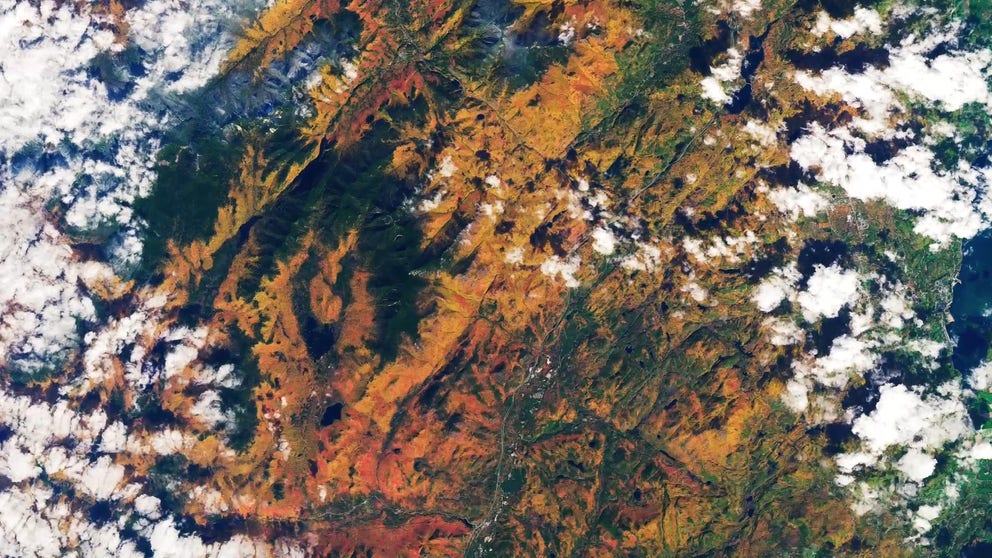Some of the planet's most colorful autumn leaf displays are visible from space
Some areas of the planet are so enriched with deciduous trees that colorful displays cover hundreds of square miles and are easily spotted by satellites.
See the most beautiful fall foliage on Earth—from space!
Some areas of the planet are so enriched with deciduous trees that their colorful displays are easily spotted by satellites.
It's one thing to drive along a quiet street and gaze at the explosion of rich colors that autumn leaves grace much of the nation as the trees begin their transition toward winter.
It's another thing to see them… from space!
Some areas of the planet are so enriched with deciduous trees that colorful displays cover hundreds of square miles and are easily spotted by satellites – or even astronauts!
Over the past several years, NASA's Earth Observatory program has collected some of their favorite shows as seen from various satellites thousands of miles away.
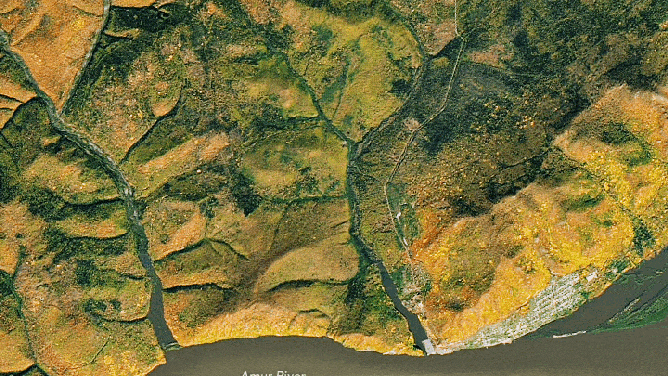
(NASA Earth Observatory)
HOW TO WATCH FOX WEATHER ON TV
Their most recent image features the vibrant reds, oranges and yellows from northeastern New York's Adirondacks -- one of the prime autumn leaf viewing areas in the nation.
Dry conditions in the summer of 2022 dulled autumn foliage in many parts of the United States, according to Earth Observatory's Kathryn Hansen. But not so in the Adirondacks, where LANDSAT satellites found no such "dull" display there.
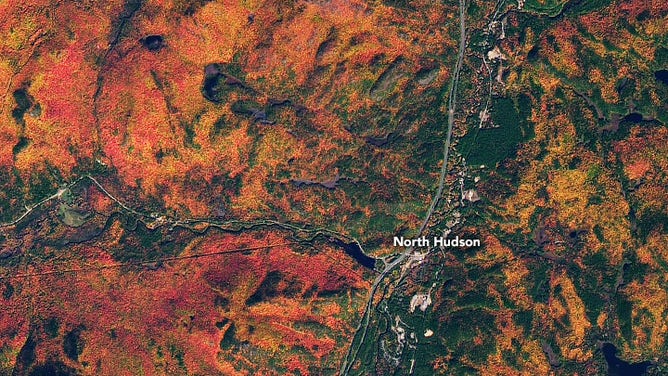
Vibrant leaf color in northeast New York taken Oct. 15, 2022.
(NASA Earth Observatory)
A bit farther south in Pennsylvania's Appalachian Mountains, brilliant autumn colors could be spotted lining the ridge tops:
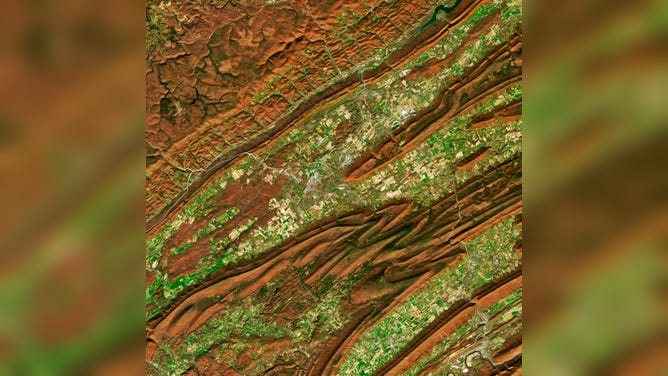
The folded mountains of central Pennsylvania were past peak leaf-peeping but still colorful when the Operational Land Imager (OLI) on the Landsat 8 satellite passed over on November 9, 2020.
(NASA Earth Observatory)
A somewhat similar scene could be found in Virginia's Shenandoah Mountains… all awash in color:
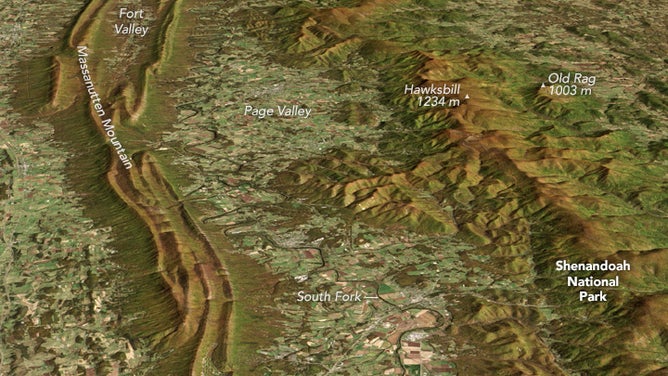
On October 21, 2013, the Operational Land Imager (OLI) on Landsat 8 captured this natural-color image of the neighboring ridges. The Landsat image has been draped over a digital elevation model based on data from the Advanced Spaceborne Thermal Emission and Reflection Radiometer (ASTER) on NASA’s Terra satellite. The tops of both ridges are brown because fall colors had emerged in these cool, high-elevation areas.
(NASA Earth Observatory)
Those north of the border are treated to a Canadian version of autumn foliage that can rival their cross-border New England counterparts. Two years ago, an astronaut on the International Space Station marveled at the oranges and yellows that filled the Ottawa area landscape.
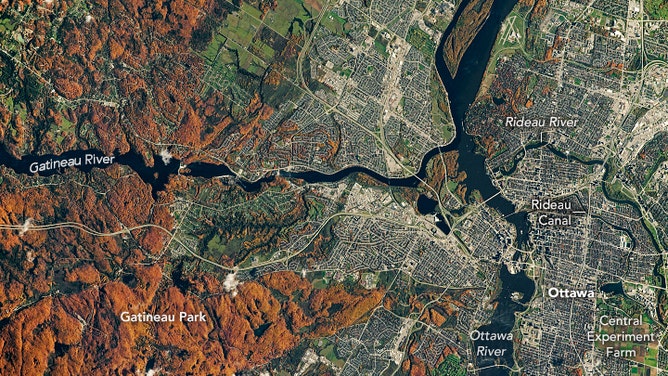
An astronaut onboard the International Space Station shot this photo of peak fall colors around Ottawa on Oct. 14, 2020
(NASA Earth Observatory)
The East Coast may get much publicity when it comes to fall foliage, but the West Coast isn't too shabby with its fall foliage either. These photos from 2018 show the brilliant reds, oranges and even purple-decorated mountains of Utah's Ogden Valley.
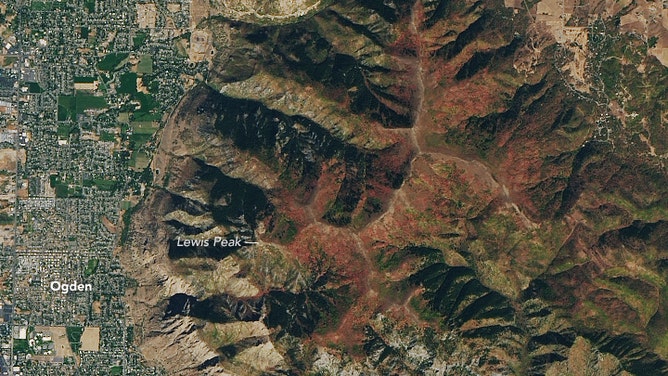
Ogden city (Utah) at the base of the colorful mountain slopes, including Lewis Peak. The U.S. Forest Service noted about the Lewis Peak trail: "There may be no better place to view the autumn colors than along this route."
(NASA Earth Observatory)
Out farther west in Alaska, winter and autumn combine! Satellites spotted the mountains changing into autumn colors amid icy scenes of snow-capped peaks and glaciers.
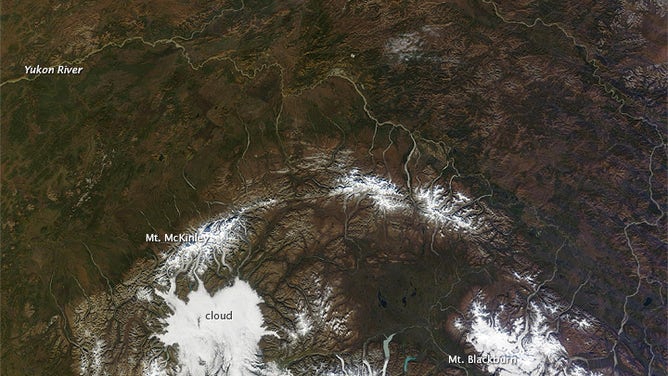
Fall colors mix with snow-capped mountains and glaciers in Alaska on Sept. 20, 2010.
(NASA Earth Observatory)
The photo above was taken Sept. 20, 2010, and while that would be considered early across the Lower 48, it was the heart of the season in Alaska.
With its far northern latitude, Alaska's autumn doesn't follow a traditional calendar. Summer is short in Denali—just June and July—and autumn generally begins in August, according to Michon Scott with Earth Observatory. Winter usually lasts from October through April.
WHY FALL SHOULD ACTUALLY BEGIN ON SEPTEMBER 1
Of course, autumn happens around the globe, and brilliant leaf displays are not just an American treat.
Imagine floating down a winding river and enjoying brilliant autumn colors for the journey. The Amur River, the world's 10th-longest, curls along the Russian-Chinese border, and its banks are a place of stunning beauty, where yellows and oranges line the water line.

The Operational Land Imager on Landsat 8 acquired these images on September 30, 2019. They show three locations along a 120-kilometer stretch of the lower Amur, northeast of Komsomolsk-on-Amur in the Russian Far East.
(NASA Earth Observatory)
Russia's Primorsky Krai…

Areas of autumn color in Primorsky Krai the Russian Far East. The image was acquired on October 12, 2021, with the Operational Land Imager (OLI) on Landsat 8.
(NASA Earth Observatory)
…and even the arctic stalwart of Siberia puts on a show of autumn colors before the harsh winter sets in.
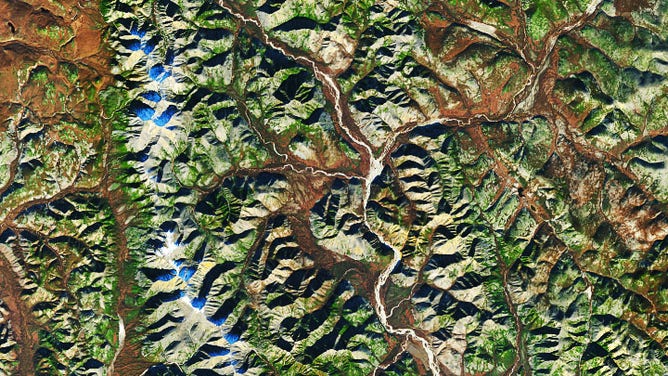
When the Landsat 8 satellite acquired this natural-color image of the Dzhugdzhur Mountains in Siberia, chilly autumn and winter weather had begun to leave its mark on the remote landscape.
(NASA Earth Observatory)
Why do leaves change color in autumn?
Leaves on deciduous trees change colors from the change in daylight length, temperature and moisture.
Leaves get their green color from the pigment called chlorophyll. Chlorophyll is also responsible for capturing sunlight and turning it into sugar. But leaves also have other colorful pigments that are masked in the summer by the dominant chlorophyll.
TEMPERATURE, MOISTURE INFLUENCE THE BRILLIANCE OF FALL COLORS
As the days get shorter, the growing lack of sunlight reduces – and eventually halts the production of chlorophyll, allowing the oranges, yellows and reds of the other pigments to shine through.
The best conditions for the most colorful displays are warm sunny days followed by cool nights. However, nights that freeze or extended periods of drought can shorten an autumn leaf season.
